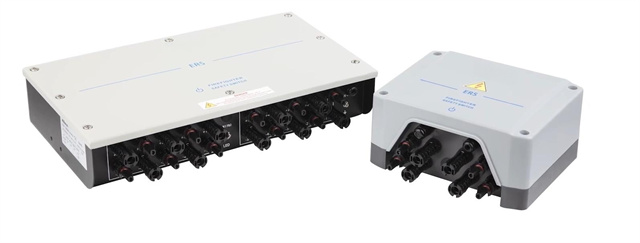Author:BLD Solar Energy SystemFROM:Solar System Converter Manufacturer TIME:2023-08-28
Introduction:
The solar industry has witnessed significant growth in recent years, with an increasing number of residential and commercial properties adopting solar photovoltaic (PV) systems. As the demand for solar energy rises, so does the need for safety measures to protect both professionals and end-users during system maintenance or emergencies. One crucial component used in PV systems is the Enphase Rapid Shutdown Switch. This article aims to provide a comprehensive guide on effectively using this switch.

The Enphase Rapid Shutdown Switch is a safety device that ensures the rapid shutdown of solar modules in case of an emergency or when the system needs maintenance. It is designed to comply with the National Electrical Code (NEC) requirements for PV systems in the United States. The switch is installed at strategic locations within the system, allowing for quick and efficient shutdown procedures.
When activated, the Enphase Rapid Shutdown Switch interrupts the power flow between the solar modules and the inverter, isolating the system from the grid. This action reduces electrical hazards, such as shock or fire, making it safer for technicians and emergency responders to work or intervene in case of an incident. The switch also provides an added layer of protection against potential electrocution during maintenance activities.

Installing the Enphase Rapid Shutdown Switch correctly is crucial to ensure its effective operation. The switch should be placed at a location specified by the manufacturer or as required by local codes. It is typically installed near the main electrical service panel or inverter, allowing for easy access in case of an emergency or system maintenance.
During installation, it is essential to wire the Enphase Rapid Shutdown Switch according to the manufacturer's instructions and the system design. Following proper wiring practices ensures the switch functions as intended and reduces the risk of electrical faults. It is also vital to perform regular inspections and maintenance to ensure the switch's integrity and functionality.

Proper training on the operation of the Enphase Rapid Shutdown Switch is vital for system owners, installers, and first responders. All relevant personnel should have a clear understanding of how to activate the switch and perform a rapid shutdown procedure effectively.
System owners must be aware of the location of the Enphase Rapid Shutdown Switch and understand how it works in case they need to shut down the system during emergencies. Installers should provide detailed instructions and demonstrations on using the switch during the commissioning process or system handover. First responders, such as firefighters, should also receive training on identifying and accessing the switch during emergencies.
Regular drills and exercises can further reinforce the knowledge and skills required to operate the Enphase Rapid Shutdown Switch effectively. These exercises should simulate various emergency scenarios, enabling participants to practice locating and activating the switch swiftly and correctly.
Conclusion:
The Enphase Rapid Shutdown Switch plays a vital role in ensuring the safety of solar PV systems. Understanding its purpose, properly installing and placing the switch, and providing adequate training are key to using it effectively. By following these guidelines, we can enhance the safety standards in the solar industry and protect both professionals and end-users.
